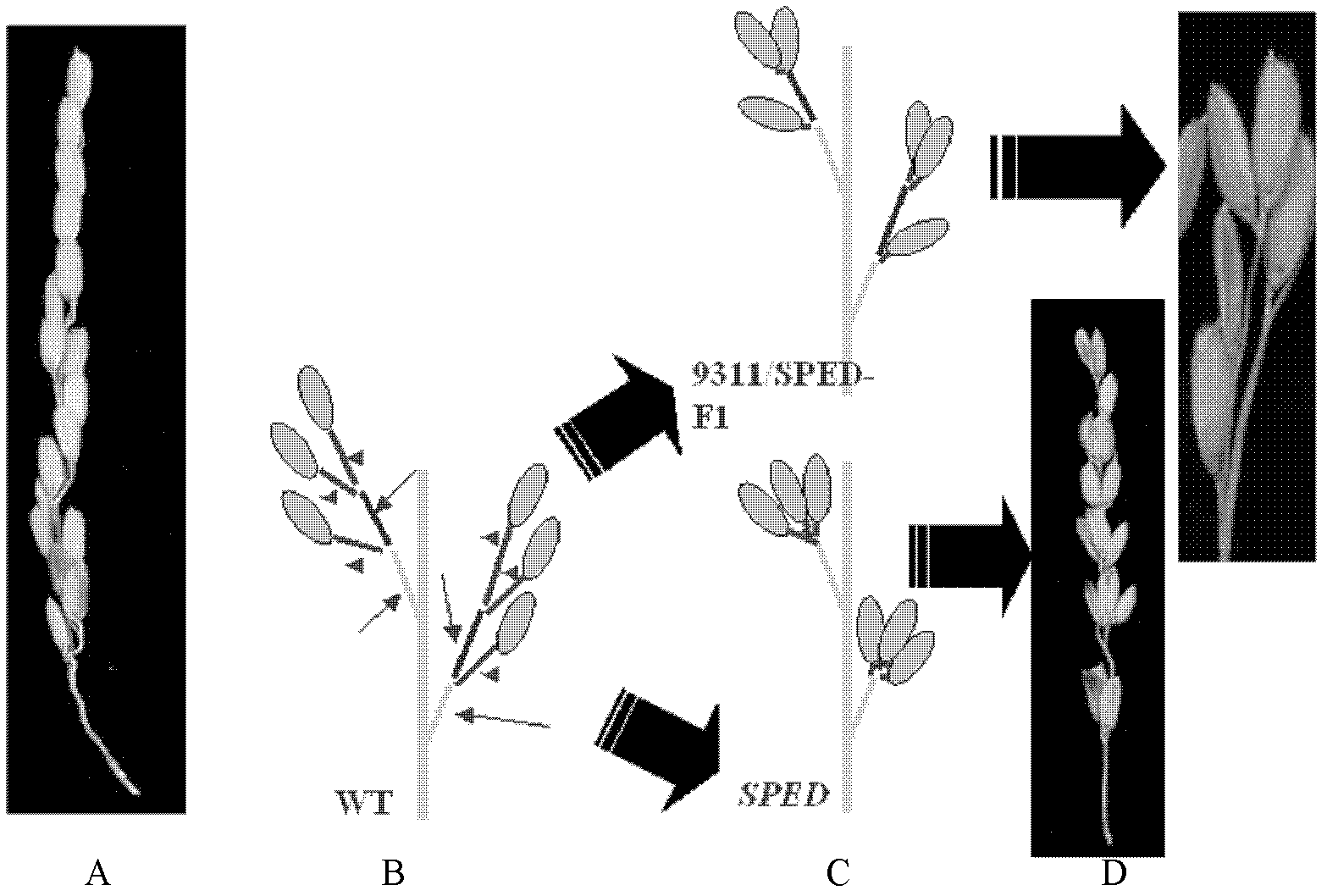Protein relevant to plant spike shape and encoding gene and appliance thereof
A spike-shaped, transgenic rice technology, applied in the direction of plant gene improvement, application, plant peptides, etc., can solve the problem of unexplainable flower stalks
- Summary
- Abstract
- Description
- Claims
- Application Information
AI Technical Summary
Problems solved by technology
Method used
Image
Examples
Embodiment 1
[0038] Embodiment 1, the acquisition of the SPED gene relevant to rice panicle shape
[0039] 1. SPED mutant traits
[0040] Under the natural conditions in summer, the vegetative growth state of the SPED mutant was normal, but the panicle morphology changed, mainly in two aspects: first, from the point of view of the spikelet growth state, the grains that were originally distributed on the first and second branches in a cascade Grains (spikelets), clustered at the top part, generally 3 to 5 clusters, and the spikelets on the first and second branches counting from the top down to 3 to 5 grains are still at a certain distance It grows on the branches; secondly, judging from the characteristics of the terminal branches, all the peduncles directly connected to the spikelets are extremely shortened to about 1.0 mm, and each level of peduncle has 1 to 3 shortened nodes from top to bottom, among which the shortened The 1-node peduncle shows clusters of spikelets with 3 grains, the...
Embodiment 2
[0057] Embodiment 2, the ear shape analysis of transgenic rice plant of SPED
[0058] According to the SPED gene design primer that amplifies above-mentioned embodiment 1, add EcoRI and HindIII restriction site, primer sequence is as follows:
[0059] SPED-F: GC GAATTC GGCTGACCTCAGCTTGAGTT (the underline is the EcoRI site) (sequence 3 in the sequence listing),
[0060] SPED-R: GC AAGCTT GTTGGTCCAGTCAAACTAATG (the underline is the HindIII site) (sequence 4 in the sequence listing),
[0061] Using the artificially synthesized SPED gene shown in Sequence 2 in the sequence listing as a template, carry out PCR amplification to obtain the full-length double-stranded cDNA product of the 1176bp SPED gene, and add EcoRI and HindIII restriction enzymes to both ends of the gene sequence site. After the product was double-digested with EcoRI and HindIII, it was connected between the EcoRI and HindIII restriction sites of the expression vector pCAMBIA1301 (purchased from CAMBIA Compa...
PUM
 Login to View More
Login to View More Abstract
Description
Claims
Application Information
 Login to View More
Login to View More - R&D
- Intellectual Property
- Life Sciences
- Materials
- Tech Scout
- Unparalleled Data Quality
- Higher Quality Content
- 60% Fewer Hallucinations
Browse by: Latest US Patents, China's latest patents, Technical Efficacy Thesaurus, Application Domain, Technology Topic, Popular Technical Reports.
© 2025 PatSnap. All rights reserved.Legal|Privacy policy|Modern Slavery Act Transparency Statement|Sitemap|About US| Contact US: help@patsnap.com



